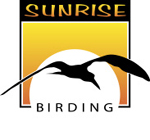
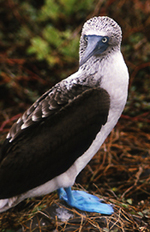 Galápagos
Galápagos
Join Sunrise Birding for a
naturalist's exploration of
Darwin's enchanted islands
July 15 - 27, 2007
For more information, contact Gina Nichol at
203.453.6724 or email [email protected]
By popular demand, a second departure has been added for
this tour
July 1 - 13, 2007. This departure is filling quickly.
Reserve your space today!
Like no other place in the world . . .
First discovered in 1535, the Galápagos Islands have fascinated the world for centuries. Darwin’s famous visit in 1835 and the subsequent publication of his Origin of Species revealed the many wonders of this living laboratory of evolution, population dynamics, ecology, and behavior. These extraordinary, isolated islands are home to a fascinating diversity of animals—from giant land tortoises weighing as much as 600 pounds to nesting Waved Albatrosses and Blue-footed Boobies. Discover the unique flora and fauna of the Galápagos Islands and meet intriguing wild residents—Marine Iguanas, Flightless Cormorants, Blue-footed, Red-footed, and Nazca Boobies, Giant Tortoises, Penguins, Darwin’s Finches, and many more.
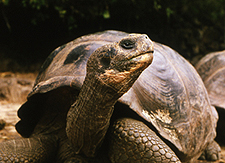 This unique tour features:
This unique tour features:
- 8 days/7 nights on an exclusive charter cruise in the Galápagos
- 3 day/2 night hotel stay on the island of Santa Cruz
- 3 nights B&B accommodation at El Jardin del Colibri near Quito
- A day of birding in the Ecuadorian Andes
- A visit to the famous Termas de Papallactas thermal springs resort
- Close encounters with wildlife beyond imagination!
This trip is designed to see as many Galápagos endemics and as much wildlife as possible. We will be accompanied by top Ecuadorian guide
Juan Carlos Calvachi throughout the trip and
a Galápagos National Park guide during our cruise.
Itinerary:
 Day 1 - July 15, 2007 - Arrival Quito
Day 1 - July 15, 2007 - Arrival Quito
We will arrive in Quito in the evening. After clearing customs, we will be transferred to our private guest house, El Jardin del Colibri, for the evening.
El Jardin di Colibri offers charming B&B accommodations for birders complete with hummingbird feeders and 2-acres of land. Its location just 25 minutes east of downtown Quito provides a convenient home base for the mainland portion of our trip.
Day 2 - July 16, 2007 - Day trip in the Andes
Today we ascend into the magnificent Andes Mountains in search of birds that make their home in the paramo, a treeless environment found above 8,000 feet, just below the snow line. This terrain plays host to an exciting range of high altitude species including Rufous-bellied Seedsnipe, Giant Conebill, Black-backed Bush-Tanager, Red-rumped Bush-Tyrant, White-chinned Thistletail, Red-crested Cotinga, Many-striped Canastero, Stout-billed Cinclodes,Tawny Antpitta, Black-billed Shrike-Tyrant, Andean Tit-Spinetail, Paramo Tapaculo, Silvery Grebe, Variable Hawk and Black-chested Buzzard-Eagle. Hummingbirds are especially numerous in the Andes and sightings may include Ecuadorian Hillstar, Shining Sunbeam, Purple-backed and Blue-mantled Thornbills, Viridian Metaltail, and the largest of all, the Giant Hummingbird. We will also visit the delightful Termas de Papallacta lodge and have the opportunity to experience the world-famous thermal hot springs. Night at El Jardin. (B, L, D)
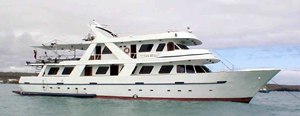 Days 3 - 10 - July 17-24, 2007 - Galapagos Cruise
Days 3 - 10 - July 17-24, 2007 - Galapagos Cruise
On Day 3, we fly to the Galápagos and board the First Class Motor Yacht San Jose, our shipboard home for the next 8 days. (B, L, D)
Life on the San Jose
The San Jose is a 95-foot motor yacht specifically built for cruising the Galápagos Islands and offers an appealing combination of comfort and space. It is a first class ship with eight air-conditioned cabins, each with private baths and hot showers. The ship has a bar, dining room, lounge, and sundeck and ample deck space for watching birds and sea life as we travel among the islands. The ship’s friendly crew will attend to us exclusively as we have the entire boat to ourselves. An international cook will keep us well fed and a bilingual, naturalist guide licensed by the Galápagos National Park Service will lead our explorations of the islands. The ship is equipped with wet suits and snorkeling equipment for our use during the trip. Small boats called pangas will ferry us to and from the islands.
Visiting the Islands
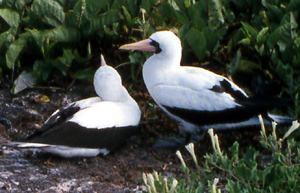 Once we settle into the San Jose’s comfortable cabins for our cruise of the islands, our guide will brief us on our itinerary. Each day we will visit one or more of the islands and we will often cruise at night, enabling us to make maximum use of daylight hours to explore the islands. As we move from island to island, we will watch for whales, dolphins, rays and other sea life that abounds in the waters around the Galápagos. To protect the wildlife and minimize the impact of tourism, access to the islands is tightly controlled and we will go ashore with our GNPS guide. Don’t be surprised if we go ashore at first light to see wildlife when it is most active. Since most of our stops are in unspoiled wildlife areas, there may or may not be docks at our landing spots. Hence, the pangas will take us to and from shore. Some landings will be wet and others will be dry. Each evening (and whenever appropriate), we will review the list of sightings of the day and be briefed on what to expect next.
Once we settle into the San Jose’s comfortable cabins for our cruise of the islands, our guide will brief us on our itinerary. Each day we will visit one or more of the islands and we will often cruise at night, enabling us to make maximum use of daylight hours to explore the islands. As we move from island to island, we will watch for whales, dolphins, rays and other sea life that abounds in the waters around the Galápagos. To protect the wildlife and minimize the impact of tourism, access to the islands is tightly controlled and we will go ashore with our GNPS guide. Don’t be surprised if we go ashore at first light to see wildlife when it is most active. Since most of our stops are in unspoiled wildlife areas, there may or may not be docks at our landing spots. Hence, the pangas will take us to and from shore. Some landings will be wet and others will be dry. Each evening (and whenever appropriate), we will review the list of sightings of the day and be briefed on what to expect next.
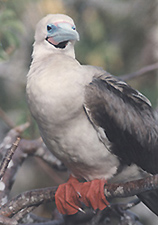 Cruising the Islands
Cruising the Islands
Our cruise will take us to the most important islands of the Galápagos archipelago. The itinerary will be flexible with the goal of seeing as much wildlife and as many endemics as possible. Though our itinerary is subject to change according to wildlife viewing opportunities and park restrictions, we are scheduled to visit the following islands:
Genovesa, also known as Tower Island, in the northern Galápagos just north of the equator is a must visit for birdwatchers. Darwin Bay, the protected harbor of this low-lying island, is the flooded crater of an extinct volcano. Young Red-footed Boobies will greet us in the bay and likely perch on the deck of our ship. All around the bay we’ll look for Great Frigatebirds with their huge red gular pouches, tiny Wedge-rumped (or Galápagos) Storm Petrels, Swallow-tailed Gulls, Lava Gulls, Brown Noddys, and elegant Red-billed Tropicbirds. This truly oceanic island is a nesting site for some of the most pelagic species in the Galápagos archipelago. Ashore, we will explore colonies of Red-footed and Nazca Boobies, try for closer looks at rare Lava Gulls and endemic Swallow-tailed Gulls, and watch for Short-eared Owls hunting Galápagos petrels coming from and going to their burrows. Inland, we will look for some of Darwin's famous finches including Large Ground Finch, Sharp-beaked Ground Finch, and Warbler Finch, as well as Galápagos Dove.
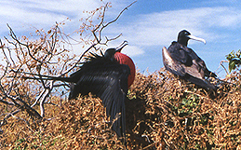 San Cristobal Island is the fifth biggest island of the Galápagos and was Darwin’s first landing spot in the islands. Puerto Baquerizo Moreno, the political capital of the Galápagos, is here. Comprising three or four extinct volcanoes, San Cristobal is the only place in the world where the Chatham Mockingbird can be found. We’ll look for Great and Magnificent Frigatebirds on this charming, peaceful island as well as endemic Lava Lizards on the ground. And, we’ll travel into the highlands to find Dark-billed Cuckoo, Vegetarian Finch, as well as some of the other finches.
San Cristobal Island is the fifth biggest island of the Galápagos and was Darwin’s first landing spot in the islands. Puerto Baquerizo Moreno, the political capital of the Galápagos, is here. Comprising three or four extinct volcanoes, San Cristobal is the only place in the world where the Chatham Mockingbird can be found. We’ll look for Great and Magnificent Frigatebirds on this charming, peaceful island as well as endemic Lava Lizards on the ground. And, we’ll travel into the highlands to find Dark-billed Cuckoo, Vegetarian Finch, as well as some of the other finches.
Wildlife-filled Española or Hood Island, is the southernmost island of the Galápagos. Here, we will visit two incredible sites - Gardner Bay and Punta Suárez. Galápagos Sea 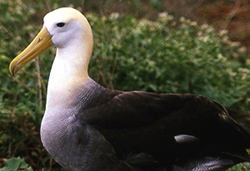 Lions will greet us at Gardner Bay. Ashore, we will meet the endemic Hood Mockingbird, known for its tendency to follow tourists, Yellow Warbler, American Oystercatcher, Wandering Tattler, and some of the thirteen species of Darwin’s finches including Large Cactus Finch and Warbler Finch. At Punta Suárez, we will walk a trail that leads through a Blue-footed Booby nesting colony and the only known nesting site of the enormous Waved Albatross. Along the way we will marvel at Marine Iguanas, watch Sally Lightfoot Crabs scurry over the lava, and keep an eye out for Galápagos Hawks perched on the low vegetation. The trail leads toward the cliffs where we will watch albatross and other seabirds soaring and see the famous blowhole, a fissure in the lava where water spurts high into the air like a geyser.
Lions will greet us at Gardner Bay. Ashore, we will meet the endemic Hood Mockingbird, known for its tendency to follow tourists, Yellow Warbler, American Oystercatcher, Wandering Tattler, and some of the thirteen species of Darwin’s finches including Large Cactus Finch and Warbler Finch. At Punta Suárez, we will walk a trail that leads through a Blue-footed Booby nesting colony and the only known nesting site of the enormous Waved Albatross. Along the way we will marvel at Marine Iguanas, watch Sally Lightfoot Crabs scurry over the lava, and keep an eye out for Galápagos Hawks perched on the low vegetation. The trail leads toward the cliffs where we will watch albatross and other seabirds soaring and see the famous blowhole, a fissure in the lava where water spurts high into the air like a geyser.
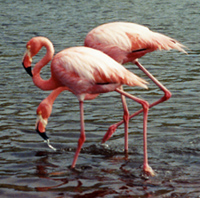 Floreana is one of the oldest islands of the Galápagos. Here we will visit the green olivine and white flour beaches of Punta Cormorán. We’ll scan the large lagoon on the island for Greater Flamingos, Whimbrel, Black-necked Stilt, Ruddy Turnstone, Brown Pelican, Magnificent and Great Frigatebird. The lowlands are also a good spot for seeing Large-Billed Flycatchers, Small-Ground Finches, Medium-Ground Finches, and Cactus Finches. We will visit the small town of Puerto Velasco Ibarra and take a trip to the highlands of Floreana to search for the endemic Medium Tree Finch. Also possible are Paint-billed Crake, Vermilion Flycatcher, Galápagos Flycatcher, and Smooth-billed Ani. We’ll also check Champion Islote just off Floreana for the rare Charles Mockingbird.
Floreana is one of the oldest islands of the Galápagos. Here we will visit the green olivine and white flour beaches of Punta Cormorán. We’ll scan the large lagoon on the island for Greater Flamingos, Whimbrel, Black-necked Stilt, Ruddy Turnstone, Brown Pelican, Magnificent and Great Frigatebird. The lowlands are also a good spot for seeing Large-Billed Flycatchers, Small-Ground Finches, Medium-Ground Finches, and Cactus Finches. We will visit the small town of Puerto Velasco Ibarra and take a trip to the highlands of Floreana to search for the endemic Medium Tree Finch. Also possible are Paint-billed Crake, Vermilion Flycatcher, Galápagos Flycatcher, and Smooth-billed Ani. We’ll also check Champion Islote just off Floreana for the rare Charles Mockingbird.
Isabela is the largest of the Galápagos islands and contains five active volcanoes, each with its own set of wildlife. 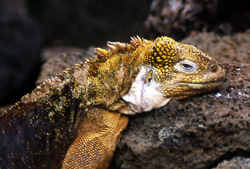 We’ll visit the western side of the island, home to Galápagos Penguin and Flightless Cormorant colonies. Punta Moreno on the southwestern shore of Isabela has spectacular views of the volcanoes. We’ll survey the rugged, barren landscape and its oases of small salty lakes for shorebirds, Greater Flamingos, White-cheeked Pintail, Striated Heron, Lava Heron, Yellow-crowned Night-Heron, Common Gallinule, Great-blue Heron, and Brown Pelican. We’ll also check the mangrove-lined lagoons for Green Sea Turtles and White-tipped Sharks. At Urbina Bay at the foot of Alcedo volcano, we will search for Galápagos Penguin, Flightless Cormorant, Magnificent Frigatebirds, Semi-terrestrial Hermit Crab, and Marine and Land Iguanas. And, we will look for very rare Mangrove Finch confined to a small mangrove forest only on the island of Isabela.
We’ll visit the western side of the island, home to Galápagos Penguin and Flightless Cormorant colonies. Punta Moreno on the southwestern shore of Isabela has spectacular views of the volcanoes. We’ll survey the rugged, barren landscape and its oases of small salty lakes for shorebirds, Greater Flamingos, White-cheeked Pintail, Striated Heron, Lava Heron, Yellow-crowned Night-Heron, Common Gallinule, Great-blue Heron, and Brown Pelican. We’ll also check the mangrove-lined lagoons for Green Sea Turtles and White-tipped Sharks. At Urbina Bay at the foot of Alcedo volcano, we will search for Galápagos Penguin, Flightless Cormorant, Magnificent Frigatebirds, Semi-terrestrial Hermit Crab, and Marine and Land Iguanas. And, we will look for very rare Mangrove Finch confined to a small mangrove forest only on the island of Isabela.
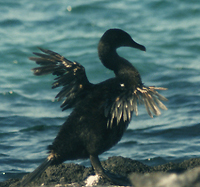 Fernandina, one of the largest unspoiled islands in the world, is also the youngest of the Galápagos islands. This is the most sparsely vegetated of the islands. Its landscape is dominated by stark lava fields, the result of volcanic eruptions in the last 20 years. Unique in every way, Fernandina is home to large congregations of Marine iguanas that sunbathe on the lava and spit salt that they ingest from drinking seawater. If the water is clear, we’ll snorkel near shore and look for Marine Iguanas feeding underwater. Fernandina is also the best place to see the Flightless Cormorant, a rare endemic that has lost its ability to fly and uses instead its powerful feet to swim and fish in the waters around the islands. We’ll look for Western Galápagos Racer, Lava Lizard, as well as Galápagos Sea Lions, Sally Lightfoot Crabs, rays, and sea turtles in the waters along the shore.
Fernandina, one of the largest unspoiled islands in the world, is also the youngest of the Galápagos islands. This is the most sparsely vegetated of the islands. Its landscape is dominated by stark lava fields, the result of volcanic eruptions in the last 20 years. Unique in every way, Fernandina is home to large congregations of Marine iguanas that sunbathe on the lava and spit salt that they ingest from drinking seawater. If the water is clear, we’ll snorkel near shore and look for Marine Iguanas feeding underwater. Fernandina is also the best place to see the Flightless Cormorant, a rare endemic that has lost its ability to fly and uses instead its powerful feet to swim and fish in the waters around the islands. We’ll look for Western Galápagos Racer, Lava Lizard, as well as Galápagos Sea Lions, Sally Lightfoot Crabs, rays, and sea turtles in the waters along the shore.
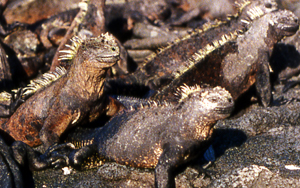 Also known as James and San Salvador, the island of Santiago is located in the middle of the Galápagos archipelago. Its spectacular shoreline features striated yellow, brown, and black cliffs of hardened volcanic ash eroded and polished by the ocean into elaborately patterned rocky beaches. Feeding frenzies of boobies or pelicans occur just offshore. As we walk the trail past the teeming tidal pools, we’ll look for Marine Iguanas, Galápagos Hawk, Lava Heron, and Galápagos Dove. At the end of the trail is a magnificent lava-walled grotto with a small population of rare Galápagos Fur Seals.
Also known as James and San Salvador, the island of Santiago is located in the middle of the Galápagos archipelago. Its spectacular shoreline features striated yellow, brown, and black cliffs of hardened volcanic ash eroded and polished by the ocean into elaborately patterned rocky beaches. Feeding frenzies of boobies or pelicans occur just offshore. As we walk the trail past the teeming tidal pools, we’ll look for Marine Iguanas, Galápagos Hawk, Lava Heron, and Galápagos Dove. At the end of the trail is a magnificent lava-walled grotto with a small population of rare Galápagos Fur Seals.
The small rugged island of Bartolome has a variety of land formations including volcanic cones, lava tubes, mangrove forests, and white sand beaches. Consequently, 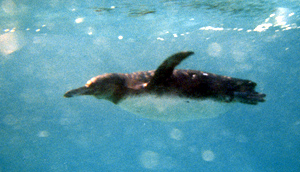 we will encounter a variety of wildlife here including Galápagos hawk, Galápagos Penguin, Sally Lightfoot Crab, Lava Heron, Marine Iguana, and Galápagos Sea Lion. Bartolome also has one of the best known and most photographed landmarks in the archipelago - Pinnacle Rock, a remnant volcanic cone. Those of us with the energy will hike to the top of Heartbreaker, the island’s 259-foot summit, for splendid panoramic views. The hike is a great way to see geology in action with two types of lava, spatter cones, cinder cones, and lava tubes all en route to the summit.
we will encounter a variety of wildlife here including Galápagos hawk, Galápagos Penguin, Sally Lightfoot Crab, Lava Heron, Marine Iguana, and Galápagos Sea Lion. Bartolome also has one of the best known and most photographed landmarks in the archipelago - Pinnacle Rock, a remnant volcanic cone. Those of us with the energy will hike to the top of Heartbreaker, the island’s 259-foot summit, for splendid panoramic views. The hike is a great way to see geology in action with two types of lava, spatter cones, cinder cones, and lava tubes all en route to the summit.
We’ll also explore the small islet of Seymour Norte, famous for its seabird colonies. The Blue-footed Booby colonies on North Seymour are the best place to photograph the dancing, sky pointing and other courtship activities.
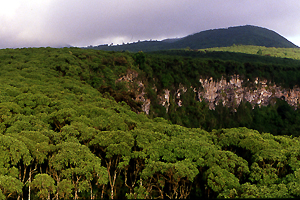 Days 10 & 11 – July 24 & 25, 2007 – Santa Cruz
Days 10 & 11 – July 24 & 25, 2007 – Santa Cruz
On Day 10, we disembark the San Jose and check in to our hotel in Puerto Ayora on Santa Cruz in the central Galápagos. Puerto Ayora is the largest town in the archipelago and will serve as our land base as we explore Santa Cruz and its wildlife. We will have two days to experience life on this unique island which rises to almost 3,000 feet above sea level and offers visible, dramatic changes in its flora and fauna from one area to another. We’ll visit the Charles Darwin Research Station, a haven of scientific inquiry and famous for its successful Giant Tortoise breeding 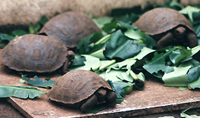 program. And, we’ll travel into the Santa Cruz highlands to see the varied habitats, explore lava tubes, sinkholes, and volcanic craters and search for highland species. We’ll keep an eye out for Vermillion Flycatcher, Galapagos Rail, Large-billed Flycatcher, Small Tree Finch, Large Tree Finch, Woodpecker Finch, and Vegetarian Finch. With a little luck, we’ll find Giant Tortoises in the wild. (B, L, D)
program. And, we’ll travel into the Santa Cruz highlands to see the varied habitats, explore lava tubes, sinkholes, and volcanic craters and search for highland species. We’ll keep an eye out for Vermillion Flycatcher, Galapagos Rail, Large-billed Flycatcher, Small Tree Finch, Large Tree Finch, Woodpecker Finch, and Vegetarian Finch. With a little luck, we’ll find Giant Tortoises in the wild. (B, L, D)
Day 12 – July 26, 2007 – Return to Quito
Today we will leave the Galapagos and fly back to Quito. Overnight at El Jardin Country Guest House. (B, L, D)
Day 13 – July 27, 2007 – Departure
After breakfast and a final morning of birding, we will transfer to Quito for flights home. (B)
Leaders : Gina Nichol, Juan Carlos Calvachi and local guides
| Sunrise Birding Galápagos Tour July 1 - 13, 2007 or July 15 - 27, 2007 TOUR PRICE: $ 3,995.00 per person from Quito, Ecuador based on double occupancy Deposit: $500 per person Single Rate: $6,500 per person. Limited availability, please inquire. Maximum Group Size: 14 plus leaders. Cost of the tour is based on a minimum of 12 people, with fewer a small group surcharge may apply. Included in cost:
Not included:
Cancellations and Refunds: Refunds, less a cancellation fee of $200 per person will be made only if Sunrise Birding, LLC is notified in writing of intent to cancel for the July 1, 2007 departure on or before March 1, 2007 and for the July 15, 2007 departure on or before March 15, 2007. No refunds will be made after March 15, 2007. All cancellations must be made in writing. There are no refunds for unused meals, accommodations, or other trip features. Insurance: The purchase of trip cancellation insurance is strongly recommended. Sunrise Birding, LLC can not accept liability for airline cancellations or delays or penalties incurred by the purchase of non-refundable airline tickets or other expenses incurred by tour participants in preparing for this tour. Questions? Contact Gina Nichol at gina@sunrisebirding.com Phone: 203.453.6724 |
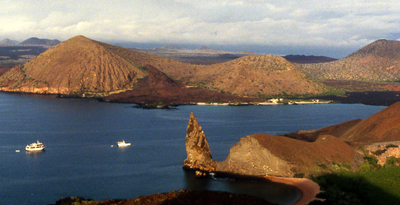
All photos copyright Gina Nichol.